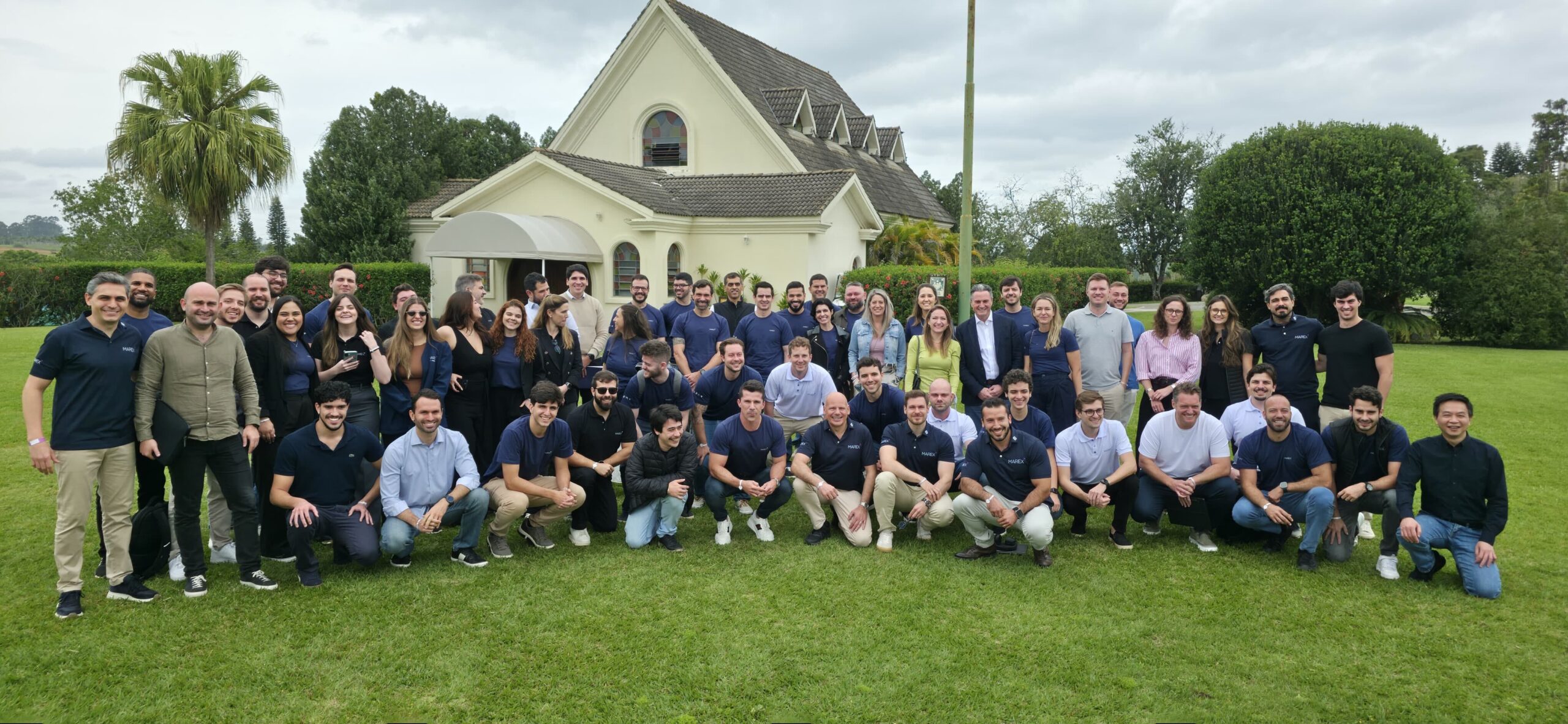
David Cohen
Head of Marex Hedging Solutions
For those who have read “The World For Sale” by Javier Blas and Jack Farchy, it will not come as a surprise to see like-minded financial professionals within the commodity industry addressing the role played by the commodity derivative markets in the development and facilitation of global trade.
The “paper market”, as some of the old guard still refer to today, was an instrumental tool whose initial purpose was to help physical buyers and sellers protect or predict future cash flows when hedging price risk.
Simultaneously, it also became a means for profit and speculation from multiple sources and players putting supporters of the traditional market efficiency theory – allowing ALL players to freely participate – up against the “interventionists” who kept a tight hold on players’ behaviours by enforcing additional rules and regulations.
In addition to the merits of the exchanges being known and available, there has always been a side demand from all types of market participants for derivative solutions which are better suited to more specific purposes, with more specific terms, or that are executed under a specific legal and credit framework.
This side demand has been the driver for significant investment in R&D over the years by derivative promoters – investment banks and financial firms mainly – with the goal (as with any other industry) to create value through innovative products and new services delivered to core clients.
It came through as fierce competition between players, resulting most of the time in win-win situations and shaping the tailor-made commodity derivative market into what it is today – a fundamental USP for clients in need of such solutions, and a significant revenue contributor from firms who are willing to make a difference.
The Limitations of Futures & Options
The concept of exchanging goods in a specific venue where volume, price, quality, and some elements of logistic and insurance can be negotiated in advance can be traced back to biblical times. At present, the oldest Futures Exchange in the UK dates back to the 16th century, the ancestor of what later became the London Metal Exchange in 1877 which is still in activity today.
Since then, a multitude of exchanges have developed their offering on commodities and other asset classes with significant successes: some listed commodities became globally recognised benchmarks for their own industries.
Regardless of the asset class, the Exchange principles are always the same:
The Exchange will allow market participants to agree on a price at a specific future date, for a specific volume, referencing a specific asset/commodity, with specific specifications, and deemed (in advance) to be delivered physically in a specific location or by cash compensation.
Theoretically (and hopefully), there should be a convergence between the price of the Future instrument and its related physical commodity (or asset) at expiration of the contract for prime efficiency of such a given exchange.
And this has worked pretty well so far!
WTI & Brent on NYMEX, Ali on LME, Sugar, Cocoa or Coffee on ICE, Soybean, Corn, Wheat on CME and many others are now the international references for the global trading of their related physical goods. Furthermore, other commodities or even processed products are now being traded against these market references adding interest, liquidity and efficiency to these listed markets.
On the other hand, however, these organised exchanges all suffer from the same major two flaws inherently related to their successes:
-
- Commodity contracts fulfil a minimum standard so that they can be recognised and usable by everyone (the “determined” parameters mentioned above)
- Exchange markets have to (theoretically) guarantee performance at all times by erasing any notion of counterparty risk between participants, leaving zero manoeuvre for credit limit or term payments.
On both of these topics, this is where tailor made derivative promoters step in and fulfil the client demand with an open space for innovation.
The legacy of FIC pricing problems
In the fixed income and currency space, the sales’/structurers’/traders’ model has prevailed for more than 25 years, where sales answering client needs or looking for competition intel were bringing specific lists of requests for new pay-outs, then structurers trying to modelise, price and book such new pay-outs, while traders translating these into Greek and risk management resolutions.
This model combined with the development of financial mathematics, price modelling research and techniques (mostly from well-known French engineering schools and universities) lead to what was once called “1st and 2nd generation exotics” which could theoretically still be priced using a combination of simple options.
Fun fact: this became the typical interview brainteaser for juniors – “How do you price a European reverse Knock-out option with a vanilla pricer? Take your time, you have 5 mins”. We all had to face it…
In the years that followed, the industry pushed the sophistication of the models higher trying to capture as realistically as possible the complexity of the dynamics of spots, volatilities, correlations as well as the increasing complexity of bespoke payouts. Only on the volatility modelling did we see traders moving from Black-Scholes to local volatilities, to stochastic volatilities and more recently exploring the intriguing rough volatility model. In parallel, Quant teams had to come up with the best numerical methods to cope with more and more computationally intensive pricings.
The community proposed mathematical solutions: optimised Monte Carlo simulations, finite difference methods to solve PDEs in addition to powerful technological solutions: CPU farms, GPUs, Cloud computing and Machine learning enabled models.
And it only needed the surge of the commodity supercycle between 2005 and 2015 for all of the derivative solutions above to be translated into the world of tangible goods.
After all, if there is a forward curve, a volatility curve, and there is enough liquidity to play, all factors are present to take action. It worked very well driven by popular client demand.
From Forex translated “European” settled strategies such as KI-Forwards, BRCs, Extendables and others to market-path dependant trades such as Daily calls and puts, Accumulators, TARFs or Range accruals, the commodity space has become as innovative as other FIC asset classes over the years allowing risk managers (and investors) to access a wider range of solutions.
A history of controversy
Unfortunately, the model migrations and innovative structures from other asset classes came with their inevitable package of poor practices and it would not be fair to omit this at this stage.
The main rationale behind the usage of innovative hedging solutions is to answer the well-known unsolvable “quest of the risk manager”: How can I achieve the best protection at a cheaper cost? (Sorry for the tech here) an ATM-Call-at-net-zero-premium is still to be invented. Good luck to the seller!
As a result, the innovative derivative world combines tactics to improve and protect hedging prices, reduce premium costs or financial working capital requirements by monetising the market value of typical risks a hedger should be able to take on.
Concretely, it can be the anticipation of a certain flow of hedging volume which will be leveraged, a given market level at which point the shape of the hedger’s risk materially changes or more simply a market opportunity the hedger is ready to abandon. These are what we call the “hidden” options a hedger can monetise and transform into protection and cost reduction.
Too often, these hidden options cannot be materialised by the hedger and this is where hedging situations materialise:
The holder of a “volume-leveraged” hedging strategy for which leveraging conditions get activated (or triggered as we say) finds themselves over hedged at an inappropriate price if they do not have the underlying volume to apply the hedging tool for.
Similarly, the holder of de-activating (knockout) product will find themselves in an unhedged situation and the trigger event cannot be taken on by the hedger.
Overall, it is a well-known fact that these cases have been fully audited and reviewed by the regulators in all jurisdictions and there are now clear guidelines, principles and rules which are translated in “Best Market” practices to be followed by each license holder.

So what is the state of the market today? A very innovative landscape within a profitable industry and sustained by a strong demand from clients and intermediaries. BUT this comes with a major flaw for promoters:
The one specific characteristic which makes the financial derivative industry so peculiar is the absence of patent: innovation cannot be protected nor can products be ring fenced!
To find a new idea, a new pay-out, a new framework to execute business, to then be replicated by competitors in no time – this is the name of the game in this sales/structurer/trader model as I mentioned above.
Inevitably, with an arising competition and an increasing number of providers, the margins erode quickly until the new product reaches public domain and becomes a “vanilla” solution: a high volume low margin product.
And this is where the major paradox of this industry lies, highly technological and rewardable but very “short cycled” where the benefit of innovation fades away at fast pace for the benefit of the customers.
Hence the need for constant innovation to respond to an ever-increasing problem-solving demand from our customer base.




